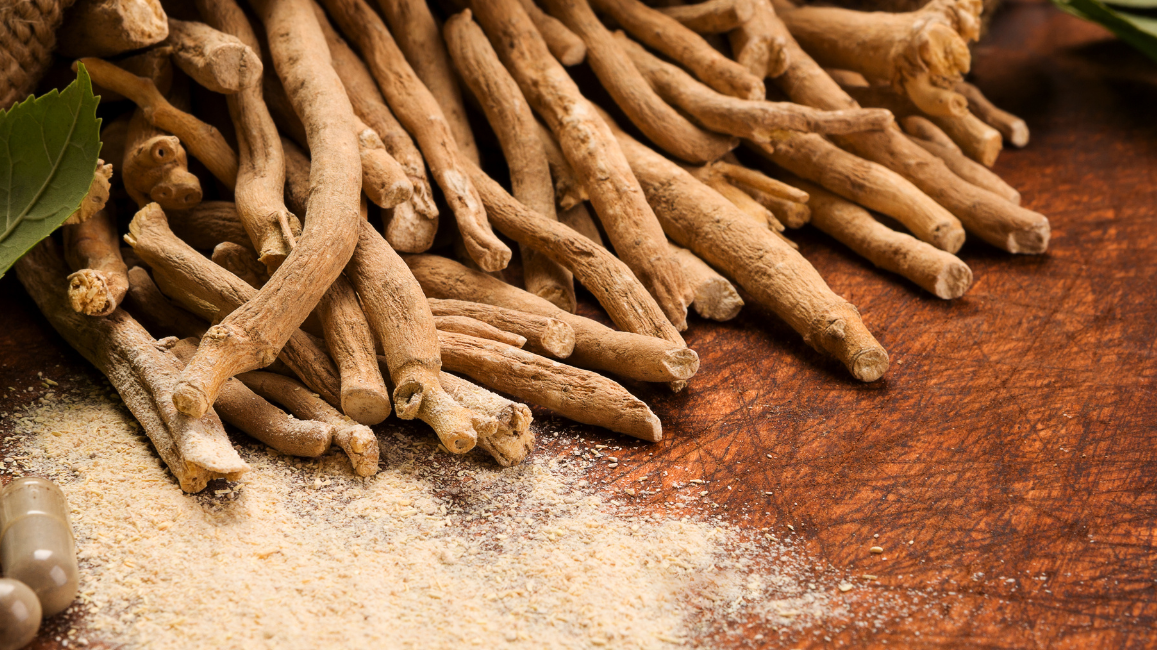What is blood pressure?
Blood pressure is made up of 2 numbers. The top number is called the systolic blood pressure and measures the pressure your heart is under when blood is pumped out around the body. The bottom number is called the diastolic blood pressure and measures the pressure in our vessels between heartbeats. Blood pressure is measured in millimetres of mercury (mmHg). You may also have heard of high blood pressure referred to as hypertension. In general, women have lower blood pressure than men, this difference decreases as women enter the menopause.
Blood pressure differs depending on your age and this can be seen below:
Blood pressure ranges for adults – 16yrs+
Low BP is classed as under 90/60 mmHg
Ideal BP – Between 90/60 mmHg and 120/80 mmHg
Pre-high blood pressure – Between 120/80 mmHg and 140/90 mmHg
High BP - Over 140/90 mmHg. For over 80-year-olds, this would be 150/90 mmHg

Source: Blood Pressure UK
How can I check my blood pressure?
There are many ways you can check your blood pressure. You can go to your local pharmacy for a free blood pressure check, call your GP surgery or take it yourself at home with a blood pressure monitor. Blood pressure monitors can be bought from pharmacies, big retailers and online.
If you do decide to take your own blood pressure at home here are a few tips to try and prevent an inaccurate reading:
- Drinking caffeine or smoking should be stopped 30 minutes prior
- Give yourself 5 minutes of quiet time before attempting to take the reading
- Take your blood pressure seated with your legs uncrossed and flat on the floor
- Place the blood pressure cuff around your bare arm and make sure the wire is facing upwards and in a central position.
- Place your arm in a relaxed bent position, preferably resting on a table or the arm of a chair
- Don’t talk whilst your blood pressure is being taken
- Press the start button
- Document the reading. Such as 120/80
- Do this 3 times with a 1–2-minute pause in between
If you are trying to track and compare your blood pressure it is recommended to take your blood pressure at the same time each day.
When getting your blood pressure done at the pharmacy or GP surgery most of the above will be done for you but you may find that the reading is higher than when you take it yourself at home. This could be due to something called “white coat syndrome” which is when just being in a healthcare setting increases blood pressure due to anxiety, stress or worry. GPs may offer you a portable 24-hour blood pressure monitor to take home. The monitor measures your blood pressure at regular intervals throughout the day whilst doing your day-to-day activities.
Try taking your blood pressure in both arms and seeing if there is a difference. A small difference in blood pressure readings (around 10 mmHg) between each arm is normal. However, a difference of more than 10 mmHg might be a sign to talk to your doctor. The difference can be in the top number or the bottom number. This could be a sign of peripheral artery disease or developing heart disease in future.

When is the best time to take blood pressure?
The best time to take your blood pressure is twice a day, in the morning and in the evening to get an overall view of how your blood pressure is doing throughout the day.
In the morning, our blood pressure is at its lowest and in the evening between 4 pm and 6 pm, it is at its highest. Our blood pressure can fluctuate by up to 30% throughout the day due to our hormones, our activity level and eating habits.
Ultimately, the best time to take your blood pressure is when it suits you and your lifestyle.
What causes high blood pressure?
There are many causes for high blood pressure. These can be singular or additive or because of a health condition:
- Sedentary lifestyle
- Poor diet
- High stress levels
- Age – Over 50 years old
- Smoking
- Overconsumption of alcohol
- Overweight
- Lack of physical activity
- High salt intake
- Family history of high blood pressure especially in black and Asian populations
High blood pressure can also be caused by other health conditions such as:
- Diabetes
- Kidney problems
- Sleep apnoea
- Thyroid problems

Signs of high blood pressure
High blood pressure doesn’t often result in symptoms until blood pressure is at extremely high levels. You may not realise we have high blood pressure and feel completely normal which is why we should be checking it more frequently as we age. However, there are some physical signs and symptoms that could occur to look out for:
- Visual disturbance – blurred vision, floaters
- Headaches
- Shortness of breath
- Nosebleeds
Blood pressure during the menopause and pregnancy
Hormonal changes such as menopause can indirectly result in higher blood pressure because oestrogen drops during menopause. This female hormone plays a vital role in protecting our cardiovascular system. It stimulates our blood vessels to relax and widen allowing blood to flow more easily. Oestrogen dropping during the menopause has been linked to an increased risk of cardiovascular disease therefore keeping an eye on our blood pressure is recommended.
Blood pressure during pregnancy normally decreases in the first and second trimesters, however high blood pressure can occur and result in the following:
Chronic hypertension
This is high blood pressure before 20 weeks gestation — a woman with high blood pressure before week 20 of pregnancy is likely to have pre-existing high blood pressure.
Gestational hypertension
This is high blood pressure that is new and occurs after 20 weeks' gestation and there is no protein found in the urine.
Pre-eclampsia
This is new high blood pressure presenting after 20 weeks gestation with significant protein from in urine. Pre-eclampsia is a multi-system disorder which can affect the organs of the mother. It is a concern and seeking medical advice immediately is needed. Some of the physical symptoms of pre-eclampsia include vision disturbances, severe headaches, sudden swelling of the face, hands/feet, vomiting and breathlessness.
What causes low blood pressure?
Movements such as going from lying to standing up can sometimes make us feel lightheaded or dizzy for a brief period of time. This is due to something called postural hypotension. This can occur when you are dehydrated due to lower blood volume.
Medications that are taken to lower blood pressure may be taken incorrectly or too much taken can result in low blood pressure. This can also happen with water tablets (diuretics) and heart disease.
Low blood pressure can sometimes also be a sign of a life-threatening emergency such as sepsis, an allergic reaction (anaphylaxis) or heavy blood loss.
What are low blood pressure symptoms?
Low Blood pressure is below 90/60 mmHg and may be accompanied by some of the symptoms below:
- Dizziness
- Lightheaded
- Fainting
- Tiredness
- Confusion
- Falling
How to reduce high blood pressure?
Blood pressure tablets to treat high blood pressure may be prescribed to you. These blood pressure medications are split into various categories and have different mechanisms of action. Below are some of the main groups of medication for high blood pressure.
- Angiotensin converting Enzyme (ACE) inhibitors such as ramipril. Common side effects include a dry cough, dizziness and headaches
- Calcium Channel blockers such as amlodipine. Common side effects include ankle swelling, constipation and headaches
- Angiotensin receptor blockers (ARB) such as candesartan. Common side effects include headaches, dizziness
- Diuretics such as Bendroflumethiazide. Common side effects include needing to go to the bathroom more frequently, postural hypotension and increased thirst.
The timing of your blood pressure medication is down to personal preference if taking a once-a-day dosage. It might be a clever idea to take blood pressure medication at night to minimise the risk of falls and dizziness. However, this wouldn’t be a good idea if taking diuretics due to the side effects of urinary frequency; these would be best taken in the morning.
Statins are also another group of medications that can indirectly lower your blood pressure by reducing cholesterol especially low-density lipoproteins (LDL). Too much of this type of cholesterol can build up along the artery walls and create a narrowing of the arteries resulting in an increase in blood pressure

How to lower blood pressure naturally
We offer a few natural alternatives that could help reduce blood pressure and can be used alongside blood pressure medications and other prescribed medication such as statins:
These three supplements can be taken together and work in different ways.
Black Garlic with Vitamin D
Our Black Garlic contains fermented black garlic which is more potent than normal raw garlic. Normal garlic contains Allicin and during the fermentation process, Allicin converts to S-Allyl Cysteine (SAC) which is the natural compound responsible for stimulating circulation and lowering blood pressure. Black Garlic can help blood flow more easily and this is why we wouldn’t recommend taking it if you are on any blood thinners or antiplatelets such as Warfarin, Apixaban, Clopidogrel and Aspirin.
Metabolic Gold
Our Metabolic Gold contains Bergamot fruit extract and Artichoke Leaf extract. Both ingredients may improve certain risk factors for heart disease. Lowering cholesterol levels to avoid atherosclerosis and build up along the vessel walls which narrows them resulting in increased blood pressure.
Marine Magnesium
Our Marine Magnesium can also help with blood pressure by relaxing the blood vessels.
Nutrition
Other than supplements we can help our blood pressure through the food we eat and don’t eat.
- Reduce salt intake to less than 6g per day – Not all salts are the same. Here we are referring to table salt that contains sodium.
- Increase consumption of healthy unsaturated fats - oily fish, avocado, eggs and nuts/seeds.
- Reduce consumption of artificial sugars and saturated fats.
- Reduce alcohol intake – 14 units weekly. Try to spread them over a few days rather than consuming them all at once as our liver finds it hard to process. What does a unit of alcohol look like? 40% spirit (25ml), wine (100ml), Beer (180ml).

Exercise
The main thing when it comes to exercise is to do something you enjoy and that you can be consistent with. For heart health, we need to do some form of cardiovascular exercise such as walking, running, swimming or cycling.
150 minutes of moderate intensity (you can still hold a conversation) cardio or 75 minutes of vigorous intensity (you can only speak a few words) cardio a week is recommended by the NHS. It has now been shown that muscle mass and cardio-respiratory fitness are linked with longevity. A full body strength training session is an effective way to do this, aiming for twice a week to maintain muscle mass especially as we age.
Speak to our expert pharmacists today
A key element of our vision is accessibility to our expert advice service; allowing customers to make a personalised and considered decision when it comes to their health.
Our pharmacists are on hand Monday – Friday 9 am – 5 pm. Book your free consultation today! Book Now!
Charlotte Parker-Lennox

Charlotte is a pharmacist with 6 years of experience working in retail pharmacy and integrated urgent care (IUC) alongside nurses, paramedics and doctors.
She has changed the direction of her career to support people with a holistic approach to wellness by treating the root cause of your health concerns. She enjoys an outdoor challenge, completing marathons and cycling adventures around the UK.









